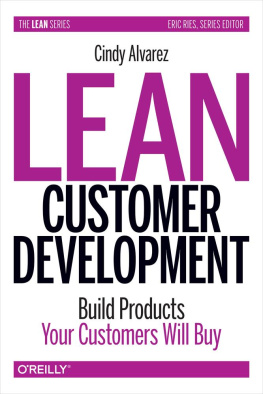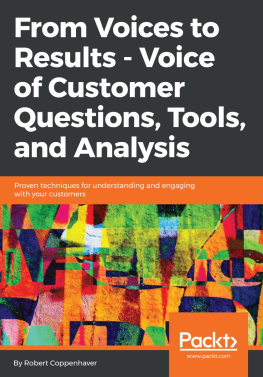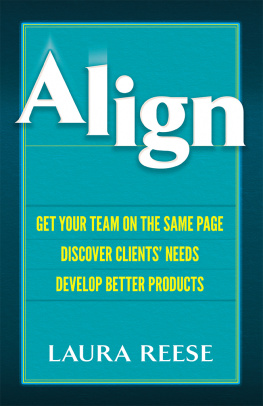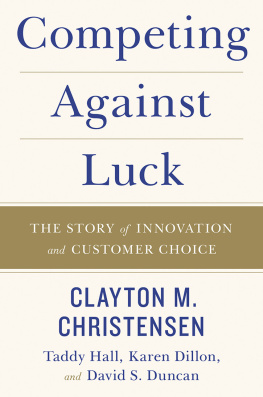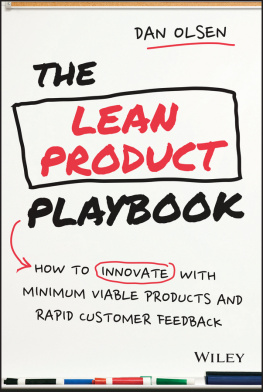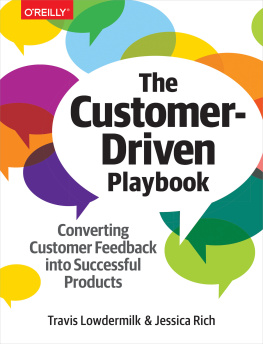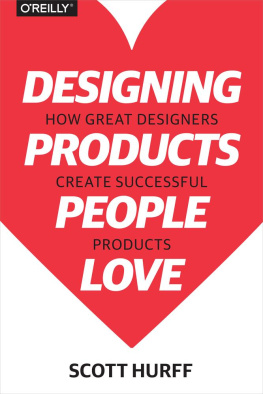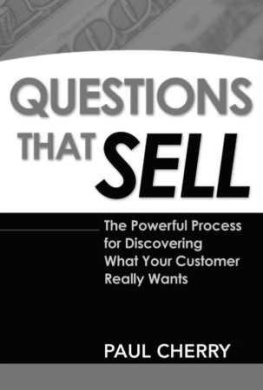Lean Customer Development: Building Products Your Customers Will Buy
Cindy Alvarez
Beijing Cambridge Farnham Kln Sebastopol Tokyo
Special Upgrade Offer
If you purchased this ebook directly from oreilly.com, you have the following benefits:
DRM-free ebooksuse your ebooks across devices without restrictions or limitations
Multiple formatsuse on your laptop, tablet, or phone
Lifetime access, with free updates
Dropbox syncingyour files, anywhere
If you purchased this ebook from another retailer, you can upgrade your ebook to take advantage of all these benefits for just $4.99. to access your ebook upgrade.
Please note that upgrade offers are not available from sample content.
Praise for Lean Customer Development
Cindy has done us a great service. Lean Customer Development shines the light on the discipline of developing a clear understanding of the customer. By understanding who the customer is, what their real needs are and developing clear hypotheses; product, design, and engineering can design, build, and test what customers really want. This frees teams to focus on the business of bringing the best experiences to life instead of a product nobody wants. Whether you are a startup or a large enterprise you need to develop this discipline and this way of thinking about the customer. I recommend this book.
Bill ScottSenior Director UIE, PayPal
Cindy drives home the case for maintaining a continuous dialog with our customers. This book is chock full of actionable steps to make the most out of every conversation, user test, and feedback session. She opens up the research process encouraging teams to build a shared understanding of their users needs and the validity of their hypotheses. Make sure you add this terrific step-by-step guide to your arsenal of product development tools.
Jeff GothelfAuthor, Lean UX
Companies are learning that the only competitive advantage is the ability to make continuous learning and iteration part of their culture. For many large organizations, including Microsoft, this means re-learning how to engage with customers as partners. Lean Customer Development offers a view of how companies of any size can practice deep customer learning in parallel with product development.
Adam PisoniCorporate Vice President, Microsoft
This is a daunting book. Its so packed with concrete steps, hard facts, and proven techniques that it removes any excuses you might have around building the right product for the right market. When I finished it, the first thing I wanted to do was go read it again. The second thing was to get out of the building and test five startup ideas. Its that good.
Alistair CrollFounder, Solve for Interesting
Understanding what your customers need and will buy is easier said than done when your customers are Fortune 100 companies. Lean Customer Development is full of practical, hands-on guidance that allows our entrepreneurs to immediately get out of the building and validate (or invalidate) their market and assumptions.
Ravi BelaniManaging Director, Alchemist Accelerator; Fenwick & West Lecturer of Entrepreneurship, Stanford University
Foreword
Steve Blanks ideas are so well known today that some may not realize that when he first self-published The Four Steps to the Epiphany , he was very much a voice in the wilderness. Steve, with whom Ive been fortunate to work as an investor, mentor, and friend, was courageous enough to call for bringing the rigorous approach of product development to the business and marketing functions of startupslong before mainstream entrepreneurs and VCs caught on; in so doing, he inspired many of us to rethink our beliefs about startups. He called that theory Customer Development.
Now that these ideas have taken hold well beyond the San Francisco Bay Area and become an integral part of the Lean Startup movement, its high time to revisit them and share some of the success stories, tips, and tricks from the trenches. Its fitting that Cindy Alvarez, an early Lean Startup evangelist, has drawn upon her experience at early-stage startups and Fortune 500s alikemost recently, for Microsoft as Director of User Experience at Yammerto write a nuts-and-bolts guide for a new generation of entrepreneurs.
The word entrepreneur may bring to mind the image of college kids working on some new technology in a garage, but my meaning is a little different. A startup includes any human enterprise designed to create a new product or service under conditions of extreme uncertainty, and an entrepreneur is anyone tasked with ushering in that change. Whether theyre building a company in their garage, working for a VC-backed startup, or trying to drive innovation at an enterprise or nonprofit, what all entrepreneurs share is the need for a process that converts the raw materials of innovation into real-world success.
Companies both large and small have been drawn to a more nimble, iterative approach to innovation and growth, but as they soon discover, doing so requires a different way of interacting with current and prospective customers. The goal of any startup is to figure out the right thing to build as quickly as possible, and the Lean Startup is a set of practices for helping entrepreneurs increase their odds of success. How do we know if were building the right thing? How should a cross-functional team work together? How do we hold people accountable? These are the questions the Lean Startup methodology was designed to answer.
Customer Development is different from traditional marketing research methods. While those techniques can help us understand customer needs and preferences, and take us inside the user experience to show us how customers use a product or service, this goes a step beyondusing scientific experimentation to put what weve learned to the test. Our goal is to not simply understand customer behavior, but to learn how to change customer behavior and build a sustainable business.
The process involves running many tests at microscale in order to get the engine of growth turning, so that a startup can achieve hypergrowth. This is one of the reasons the methodology is so challenging: it requires people to work in a truly cross-functional way to synthesize what theyve learned. It means working hand-in-hand with colleagues from marketing, engineering, operations, and customer servicein other words, everyone. Engineers and scientists without traditional marketing or sales backgrounds now find themselves hearing straight from the customers mouth what he thinks about the product. People on sales teams whove been used to presenting final products recognize that the feedback they receive in sales calls can be of tremendous value to the innovation process. People in customer support positions are empowered to better meet customer requests rather than simply trying to put out fires.
But even after theyve prepared themselves to speak to customers or potential customers, many who are new to the Lean Startup methodology have plenty of questions: How can I convince people to spend their time talking to me about a product we havent even finished building? How do we get information from our best customers without potentially alienating them? If a customer cannot place an order, how can we assess whether were on the right track?
Cindy provides answers to those questions and more, offering techniques to help entrepreneurs stay grounded in reality even in the discovery phase of the process: rather than relying on what customers tells us they would like to do in the future, she provides strategies for finding out how customers actually behave. Actually changing behaviors, spending money, or learning something new has a cost, she explains. You need to figure out the difference between want and will, and uncovering that difference requires discipline in how you talk to your target customers.

